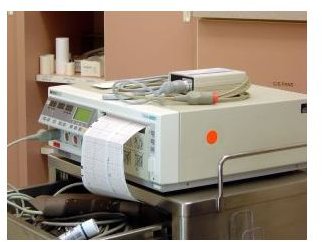Cardiac Event Monitoring for Non-Invasive Diagnosis of Heart Conditions for Patients with Cardiovascular Risk Factors
Health Causes
The American Heart Association estimates that over 80 million Americans had some form of heart disease in 2006. One symptom of these conditions is irregular heart beats or arrhythmias. You may feel as if your heart is racing. Several benign conditions can cause arrhythmia including hormonal changes during menopause, stressful situations and strenuous activity.
Cardiovascular conditions may also be at the root cause such as heart valve problems, abnormal electrolyte levels or previous heart attack history. These causes make cardiac event monitoring essential. The advantage with this method is being able to record events as they occur for a more accurate diagnosis.
How Monitoring Works
Based on your symptoms, your doctor may recommend that you wear or use a monitoring device. Basically, it is a portable electrocardiogram. They may record your heart activity continuous or just when you experience symptoms in which case, you are controlling the device.
You will either be fitted with electrodes to use a continuous device or they may be implanted under your skin. An intermittent device may be set up similarly. Other types are smaller units that you place against your chest when you experience heart-related symptoms or that you wear as a wristwatch.
Your doctor will instruct you to avoid things that may interfere with the device’s operation such as electronic inference from microwaves and electric blankets. You should also avoid wearing jewelry with metal attachments or a bra with an underwire since these items may also affect transmission.
Patient Experience
Testing does not hurt or cause pain, though you may find the electrodes noticeable and irritating when first getting used to the device. Another part of the monitoring procedure involves your input. Your doctor will ask you to note your own feelings and circumstances when you experience symptoms. Having this information along with the heart monitoring data can help her diagnose your condition.
Insurance companies such as Aetna recognize the importance of cardiac event monitoring as part of heart health care if you experience cardiac arrhythmias. To complete the diagnosis of your condition, your doctor may instruct you to send your heart monitoring data over the phone for a cardiologist to review your case.
The primary benefit is identifying your condition and beginning treatment or lifestyle changes as necessary. You may find it less stressful than being monitored in a hospital setting, especially if your symptoms only occur occasionally. Monitoring may be part of a suite of prevention measures including blood pressure monitoring and cholesterol blood tests to help patients reduce their cardiovascular risk factors. It offers an effective way to diagnose heart problems and helps prevent additional cardiac events.
References
Aetna: Clinical Policy Bulletin: Cardiac Event Monitors aetna.com
American Heart Association: Cardiovascular Disease Statistics heart.org
National Heart Lung and Blood Institute: What Causes Palpitations? nhlbi.nih.gov
Gerard Tortora and Bryan H. Derrickson. Principles of Anatomy and Physiology, Wiley, 2008.
